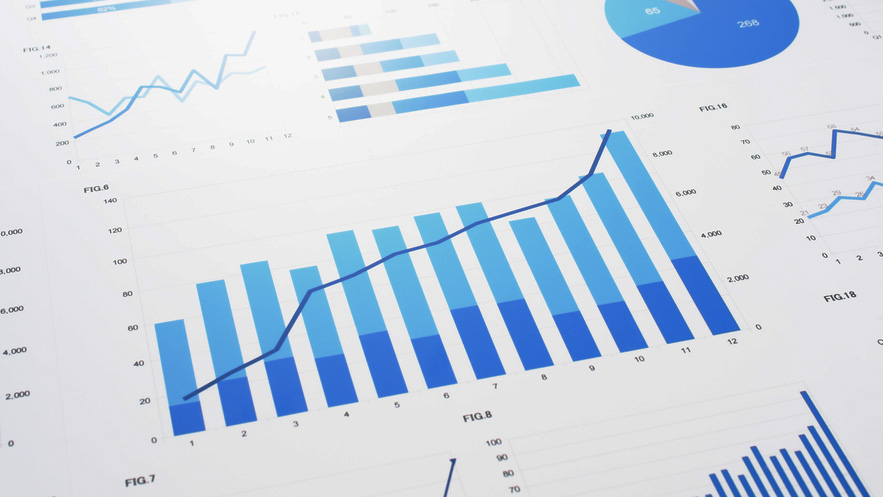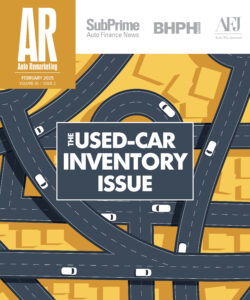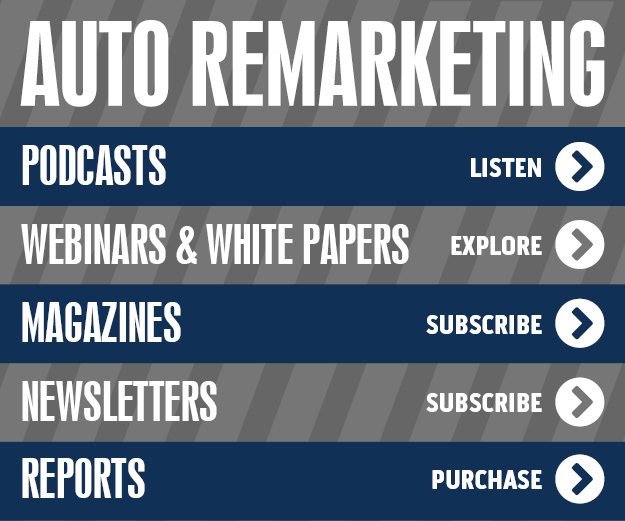Used sales could be off by double digits to close first half of 2022

It could be a challenging close to the first half of the year at dealerships on the retail sales front based on the expectations from the experts at Cox Automotive, Edmunds, J.D. Power and TrueCar.
Beginning first with the used-vehicle sales forecast from TrueCar, analysts are predicting June used sales to reach 2.9 million, which would be down 16% from a year ago and down 13% from May.
TrueCar is projecting that the average interest rate on used vehicles financed in June to be 8% with terms lasting 71 months, which would be a month longer than contracts funded a year ago.
TrueCar’s new-model sales forecast isn’t much rosier, as analysts expect U.S. retail deliveries of new cars and light trucks — excluding fleet sales — to be 1,023,466 units, which would be down 15% from a year ago and down 5% from May.
While TrueCar is forecasting that terms for new-vehicle financing contracts booked in June to be 71 months, the average interest rate on that paper is projected to be 5.2%
“As we head into the July fourth weekend, inventory across the industry remains at or near the constrained levels we’ve been seeing throughout 2022, although demand for vehicles remains strong,” TrueCar lead industry analyst Nick Woolard said in a news release. “We continue to see rapid growth in demand for new electric vehicles amid soaring fuel prices, with that segment’s mix of leads up over 100% from last June. This remains one of the areas in particular that is seeing limited inventory.”
TrueCar vice president of OEM solutions Justin Colon added, “With interest rates rising, consumers who are entering the market for a vehicle for the first time in a while might see rates very different from the ones they saw in 2018 or 2019.
“We’re seeing consumers opting for longer loan terms to offset the impact of rising APRs. Specifically, there has been a 30% increase in the mix of loan terms of 84 months or more from last year,” Colon went on to say.
Insight from Cox Automotive
According to the Cox Automotive June sales forecast, the seasonally adjusted annual rate (SAAR) of new-vehicle sales this month is expected to hit 13.8 million, up from last month’s 12.7 million pace, but well below last year’s 15.5 million level.
Analysts said the sales volume in June is expected to finish near 1.2 million units, down 7.5% from last year’s volume of 1.3 million sales. However, this is an increase of 7.5% from May’s volume of nearly 1.1 million units. There is one more selling day this June than last year and the same number as last month.
Cox Automotive pointed out that tight inventory continues to negatively impact new-vehicle sales. Since June 2021, monthly sales volume has been stuck in a tight window, with little deviation, averaging 1.1 million units a month and peaking only at 1.3 million in June 2021.
With no clear timeline for any notable recovery in new-vehicle inventory levels, Cox Automotive is lowering its full-year 2022 U.S. auto sales forecast to 14.4 million units, down from its current forecast of 15.3 million.
Analysts explained the current forecast now is for new-vehicle sales volumes to fall below the 14.6 million sold in 2020 when the market was initially ravaged by the global COVID pandemic.
“Last June, I wrote that the concern about the supply situation could not be overstated, as we were in untested territory for the market,” Cox Automotive senior economist Charlie Chesbrough said. “That sentiment remains, as there has been no significant shift in the conditions on the ground since last fall.
“Even though economic conditions have worsened in the past months, the lack of supply is still the greatest headwind facing the auto industry today,” Chesbrough added.
Perspectives from Edmunds
Edmunds is predicting that 3,498,769 new cars and trucks will be sold in the U.S. during the second quarter of 2022, which will be a 20.8% decrease from the second quarter of 2021 but a 5.1% increase compared to the first quarter of 2022.
According to Edmunds data, the second quarter historically is a stronger selling period compared to the first quarter for new vehicles: Q2 sales were approximately 10% higher on average compared to Q1 between 2017 to 2019.
Edmunds analysts noted that this year’s softer quarter-over-quarter increase is an indicator of how the automotive market is being squeezed.
“Elevated gas prices and rising interest rates only intensified the struggles faced by car shoppers amid ongoing inventory shortages in the second quarter,”, Edmunds executive director of insights Jessica Caldwell said in a news release. “The majority of consumers who are purchasing vehicles in these conditions are either in a financial position where money is less of a consideration or are doing so out of absolute necessity.”
Edmunds analysts expect supply challenges to stick around for the foreseeable future, and they advise car shoppers to temper their expectations for car shopping deals through the Fourth of July weekend and the rest of the year.
“Although most people are used to the end-of-summer and end-of-model-year sales events, automakers and dealers likely won’t be rolling out the barbecue grills or wacky waving tube men to promote discounts this year because they won’t have a surplus of inventory to clear. Consumers in this market should be determining when they actually need to buy a car instead of holding out for big sales events,” Caldwell said.
“Looking ahead, a recovery in vehicle production in 2022 seems highly unlikely at this point, but a bright spot for the industry is that profit margins are staying high and pent-up consumer demand will only continue to build as shortages continue,” she went on to say.
Expectations from J.D. Power
According to a joint forecast from J.D. Power and LMC Automotive. Retail sales of new vehicles this month are expected to reach 965,300 units, a 18.2% decrease compared with June 2021 when adjusted for selling days. June 2022 has one additional selling day compared to June 2021.
Comparing the same sales volume without adjusting for the number of selling days translates to a decrease of 15.0% from 2021, the firms said in another news release.
The firms added new-vehicle retail sales in Q2 2022 are projected to reach 2,977,300 units, a 23.3% decrease from Q2 2021 when adjusted for selling days.
“The 2022 theme we have seen of sales quality over sales quantity is continuing in June,” said Thomas King, president of the data and analytics division at J.D. Power. “On a volume basis, June year-to-date retail sales will be just under 5.9 million units, a large decline of 19.1%. Excluding pandemic-affected 2020, this is the worst first six months’ sales volume performance since 2011. However, from a profitability standpoint, the first half of 2022 has set records for both retailers and manufacturers as vehicle prices continue to rise, manufacturer discounts get ever smaller and retailer margins set new highs.
“The average transaction price for the first six months of 2022 is expected to reach a record of $44,907 — a 17.5% increase from 2021,” King continued. “This is partially due to incentive spending per unit, expressed as a percentage of average vehicle MSRP, trending towards 2.4% for the first six months, down from 7.1% for the same time period in 2021.
“Total retailer profit per unit — inclusive of grosses and finance and insurance income from new-vehicle sales are expected to reach first-half record levels on both a per unit and total basis. Profit per unit for the first half of 2022 is trending to reach $4,774, up $2,206 from the same period in 2021, while total profits are expected to reach $27.8 billion, up $9.4 billion from 2021,” King went on to say.
King also took a glimpse toward the second half of 2022 and beyond.
“Looking forward, while higher interest rates and economic concerns represent directional headwinds for the industry, consumer demand remains considerably higher than available supply,” King said. “With each additional month of inventory constraints, pent-up demand for new vehicles is building ever larger — and that demand will insulate the industry from the effects of these economic headwinds.
“As new-vehicle availability eventually improves, some softening of the current record per unit pricing and profitability may occur but will be mitigated by a return to higher monthly sales volumes,” he added.

 View The Latest Edition
View The Latest Edition

